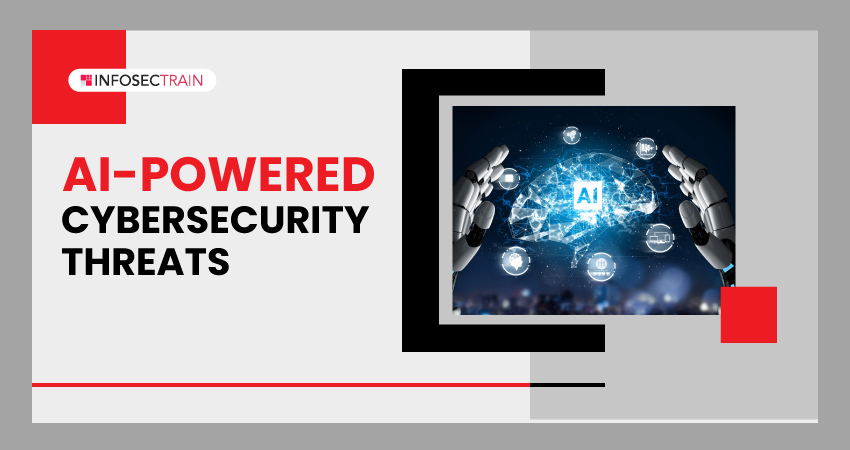AI-Powered Cybersecurity Threats
In a rapidly evolving digital era, the integration of Artificial Intelligence (AI) has not only led to unprecedented advancements but has also been inadvertently responsible for a new breed of sophisticated cybersecurity threats. As AI technology grows, malicious actors leverage its capabilities to orchestrate cyberattacks with increasing complexity and precision. These AI-powered cybersecurity threats pose significant security challenges for people, organizations, and even entire industries, as they use the same tools and tactics developed to enhance security and efficiency. This intricate interplay between AI and cyber threats necessitates a thorough understanding of the potential threats, innovative strategies, and collaborative efforts to protect the digital environment from a new era of intelligent and adaptive adversaries.

Top AI-Powered Cybersecurity Threats
Here is the list of some top AI-powered cybersecurity threats:
- Advanced Phishing Attacks: Malicious actors can use AI to create convincing phishing emails or messages by analyzing and emulating a target individual’s or organization’s writing styles and behavior patterns. These emails might be highly personalized and challenging to differentiate from authentic ones.
- Adversarial Attacks: AI-generated adversarial algorithms can deceive AI-powered security systems, such as image recognition or natural language processing. Malicious actors can manipulate outcomes or obtain unauthorized access by exploiting AI model flaws.
- AI-Generated Malware: Malware powered by AI can evolve and adapt over time, making traditional signature-based antivirus programs more challenging to identify and combat threats.
- Deepfake Attacks: AI-powered Deepfake technology generates convincing audio or video recordings that can be used to impersonate individuals and deceive targets into taking actions they would not otherwise. It could lead to social engineering attacks or the spread of misleading information.
- Automated Exploitation of Vulnerabilities: AI-generated algorithms can automate detecting and exploiting software vulnerabilities, making it faster for malicious actors to infiltrate targeted systems and networks.
- Credential Stuffing: AI-powered algorithms can automate the process of attempting various username and password combinations to log into accounts without authorization. This might lead to successful credential-stuffing attacks, especially if users reuse passwords across multiple platforms.
- Automated Botnets: AI can be used to create and manage large-scale botnets, which are networks of compromised systems that can be controlled remotely. These botnets may be used to launch DDoS attacks, spread malware, or secretly mine cryptocurrencies.
AI-powered cybersecurity threats necessitate a multi-layered defense strategy that integrates traditional security practices with AI-based solutions. Protect against AI-powered cybersecurity threats with strong AI defenses: use AI for anomaly detection, continually update and patch software, educate your team to recognize and respond to evolving threats, and implement multi-factor authentication.
Checkout the related blogs:
- How AI and ML are Used in Cybersecurity?
- The Popular Artificial Intelligence and Machine Learning Trends of 2022
How can InfosecTrain help?
InfosecTrain is a proficient global entity in technology and security training as well as consulting services. We offer numerous cybersecurity training programs that will provide valuable insights and knowledge. These programs will empower you to comprehend and effectively counteract the ever-evolving landscape of cybersecurity challenges. Whether you are a novice or an experienced professional, our comprehensive courses cater to all levels of expertise.
At InfosecTrain, we provide numerous advantages, including flexible training schedules, session recordings to participants, ongoing post-training support, and the issuance of certificates of participation upon completion. Elevate your cybersecurity prowess with our cutting-edge training and fortify your ability to safeguard digital assets.






 1800-843-7890 (India)
1800-843-7890 (India)